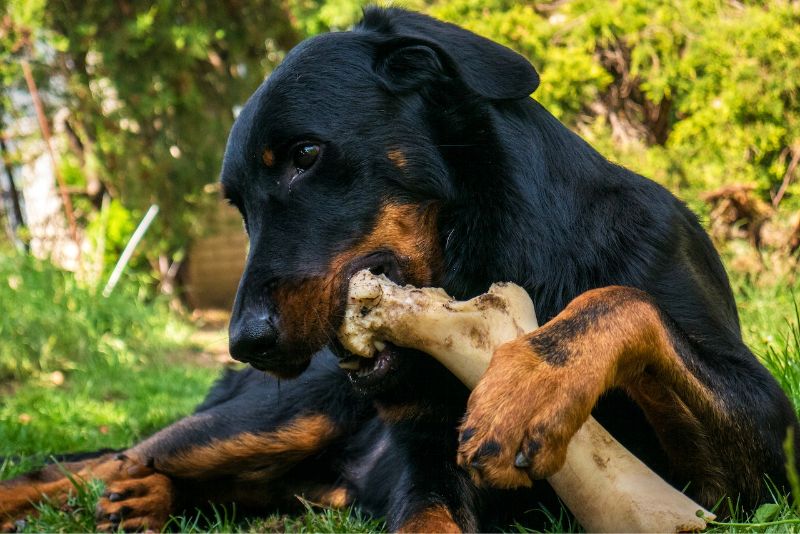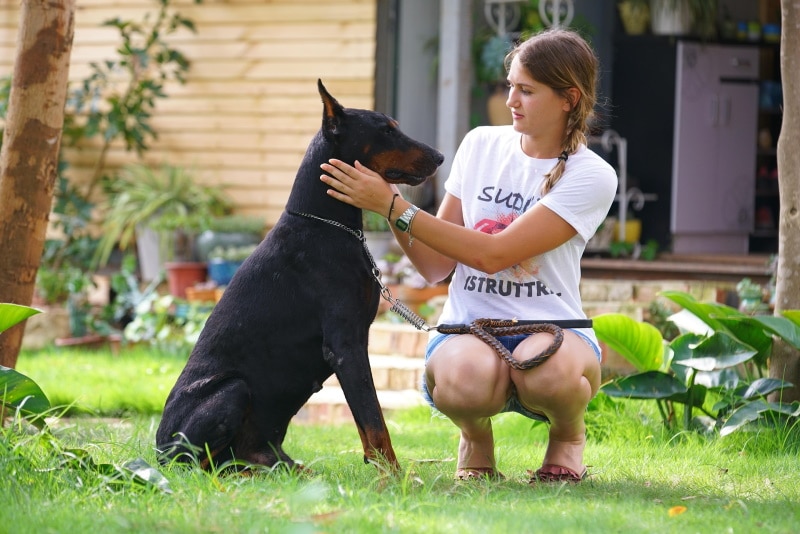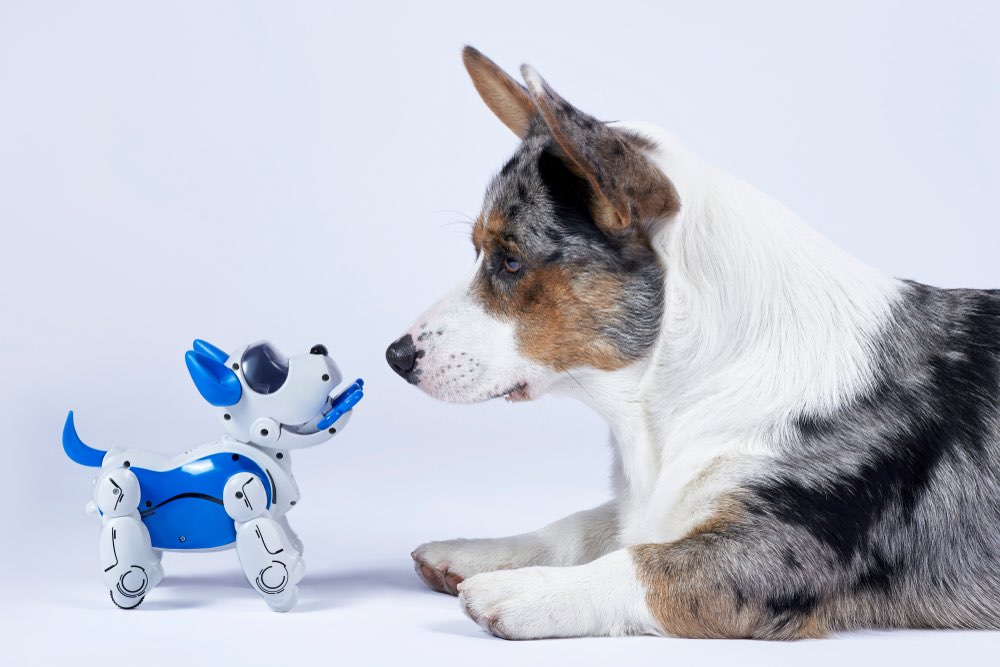How Long Do Dobermans Live? Vet Reviewed Average Lifespan, Data & Care
By Brooke Bundy
Updated on

Click to Skip Ahead
If you’re considering adopting a dog, you’re probably wanting to find a breed that’ll give you many years of life and laughter. Figuring out a dog’s life expectancy is a tricky task because critical factors depend on the individual dog more so than their breed. As a whole, Doberman Pinschers have a 10–13 year lifespan on average. However, some dogs may live longer or shorter depending on their care.
What’s the Average Lifespan of a Doberman Pinscher?
If you sat down with 50 pet parents in a room, you would hear many accounts of dogs that lived drastically longer or shorter than the average life expectancy. However, statistically, most Dobermans live between 10–13 years on average.

Why Do Some Dobermans Live Longer Than Others?
1. Nutrition
Talk to your vet about finding the best formula for your Doberman Pinscher. Not only should it be healthy and well-balanced, but the food should also be appropriate for their life stage. While it won’t hurt a puppy to eat adult food once or twice, a kibble that’s formulated for adults only gives them the nutrients necessary for maintenance and won’t fully support a growing puppy. Conversely, adults don’t need the extra protein and fat in puppy food, and seniors that are at risk of becoming obese certainly don’t.
2. Environment and Conditions
Dobermans are active dogs who are regularly used in police and military work. They won’t activate their full potential by lounging on the sofa all day long. Regularly letting your Doberman run, walk, or go to the dog park can help them stay in shape. Dobermans are actually quite agile with obstacle courses, so you might try to find a dog park in your area that has one or make one yourself in your backyard.

3. Housing
Any house with love can be a comfortable home for a Doberman. Attention and food are the most important aspects of their care. However, if you live in a small apartment, you should be prepared to exercise them more frequently than if you live on a farm with a large backyard for them to scout.
4. Size
Typically, the bigger the dog, the shorter the lifespan. Dobermans are the largest of the four types of Pinschers. Their average life expectancy is 25% shorter than the Miniature Pinscher.

5. Sex
On average, it seems that female Dobermans live about 2 years longer than males. It’s possible that this statistic may be influenced by the high rate of prostate cancer in male Dobermans.
6. Genes
Unfortunately, Dobermans are known for carrying a host of genetic diseases. They’re actually one of the breeds that are the most likely to develop cancer. Dobermans are especially susceptible to prostate cancer, which is something to consider if you’re weighing the costs of neutering your dog. Von Willebrand’s disease is a blood clotting disorder that can cause sudden nose bleeds and prevent the blood from coagulating properly, which can be life-threatening.

7. Breeding History
Some diseases, such as von Willebrand’s disease, may be traced through DNA testing. Since the Doberman is genetically susceptible to a host of diseases, it’s extremely important to buy one from a reputable breeder who tests their dogs before breeding. Otherwise, give a rescue dog a second chance at life.
8. Healthcare
You won’t catch some diseases with a DNA test. Some can only be detected through preventative care, such as cardiomyopathy. Unfortunately, you probably won’t prevent all diseases in your Doberman, but an early diagnosis can give you a head start on combating the illness through medicine and lifestyle changes if necessary, which gives them a better prognosis.

The 4 Life Stages of a Doberman
Puppy
Dobermans are fairly large puppies and can weigh anywhere from 10–20 ounces at birth. From the time your Doberman is born until 6–8 weeks of age, they’ll stay close to their mother and littermates as they nurse, play with their siblings, and learn what it means to be a dog. After weaning around 8–10 weeks old, Dobermans can be adopted into their new family, but they’ll still be in the puppy stage until their first birthday.
The teething stage is between 3 and 6 months. This is the time when they’ll gradually lose their puppy teeth and grow their permanent teeth. Be sure to supply your Doberman with some resilient chews during this time because you don’t want them practicing their strong bite on your fingers!

Adolescence
The “teenager” stage overlaps with the puppy stage. Around 6 months old, or around the time when their permanent teeth have arrived, the Doberman begins to undergo puberty. If they’re not spayed, female Dobermans will go into their first heat cycle around 8–12 months. Most dogs have their first cycle earlier at around 6–8 months, but a later estrus is common in larger breeds. Dobermans will complete most of their growth before their first birthday, although they can continue to fill out for the next year or so.
Adult
Dobermans reach their prime age between 1 and 6 years old. Romping through dog parks, soaring through agility courses, and going on hikes are all activities they’ll thrive on during this season of life. An active adult makes a healthier senior, so be sure to take the time to exercise your Doberman regularly, at least 1–2 hours each day.
Senior
Every dog is different, but most dogs begin gradually slowing down at some point during the last 25% of their expected lifespan. For Dobermans, that means they’ll become seniors between 7 and 10 years old. Switching to a senior formula can help ensure that your Doberman receives adequate nutrition for their age, and guards against obesity as senior diets typically don’t contain as much fat.
 How to Tell Your Doberman’s Age
How to Tell Your Doberman’s Age

If you’ve adopted a Doberman, congratulations! You’ve found your new best friend to take with you to the park, as well as a loyal watchdog who will alert you if intruders are nearby.
Sometimes rescue pets don’t have a long history attached to them, and it can be difficult to determine how old they are. The most obvious way to tell is to observe their size and behavior, whether they look or behave like puppies. However, adults can become excitable, too, so that’s not always the most accurate indicator.
Looking at their teeth can tell you a little more of their story. Are they small, white, and shiny like puppy teeth? Or are they dull and yellow? Perhaps they’re missing a few? If your dog’s teeth aren’t in great shape, you can probably assume they’re at least a couple of years old, but your vet might be able to tell you more.
Senior dogs are fairly easy to spot. They commonly have some gray fur mixed in with their standard color. Their gait might be a little slower than an active adult, and their figure is typically more filled in from accumulated muscle or fat.
Conclusion
You can expect to spend roughly 10–13 years with your Doberman, but many different factors play into determining a dog’s exact life expectancy. Meeting their physical needs such as feeding them a healthy, balanced diet and exercising them frequently can prolong their life and increase the quality of the years they’re here. Genetic diseases can be somewhat prevented by DNA testing before breeding, but not all diseases and cancers can be foreseen. At the end of the day, you never really know how many years you’ll spend with your pet, so be sure to make the most of every opportunity to enjoy them while they’re here.
Featured Image Credit: Wynian, Shutterstock



 How to Tell Your Doberman’s Age
How to Tell Your Doberman’s Age









